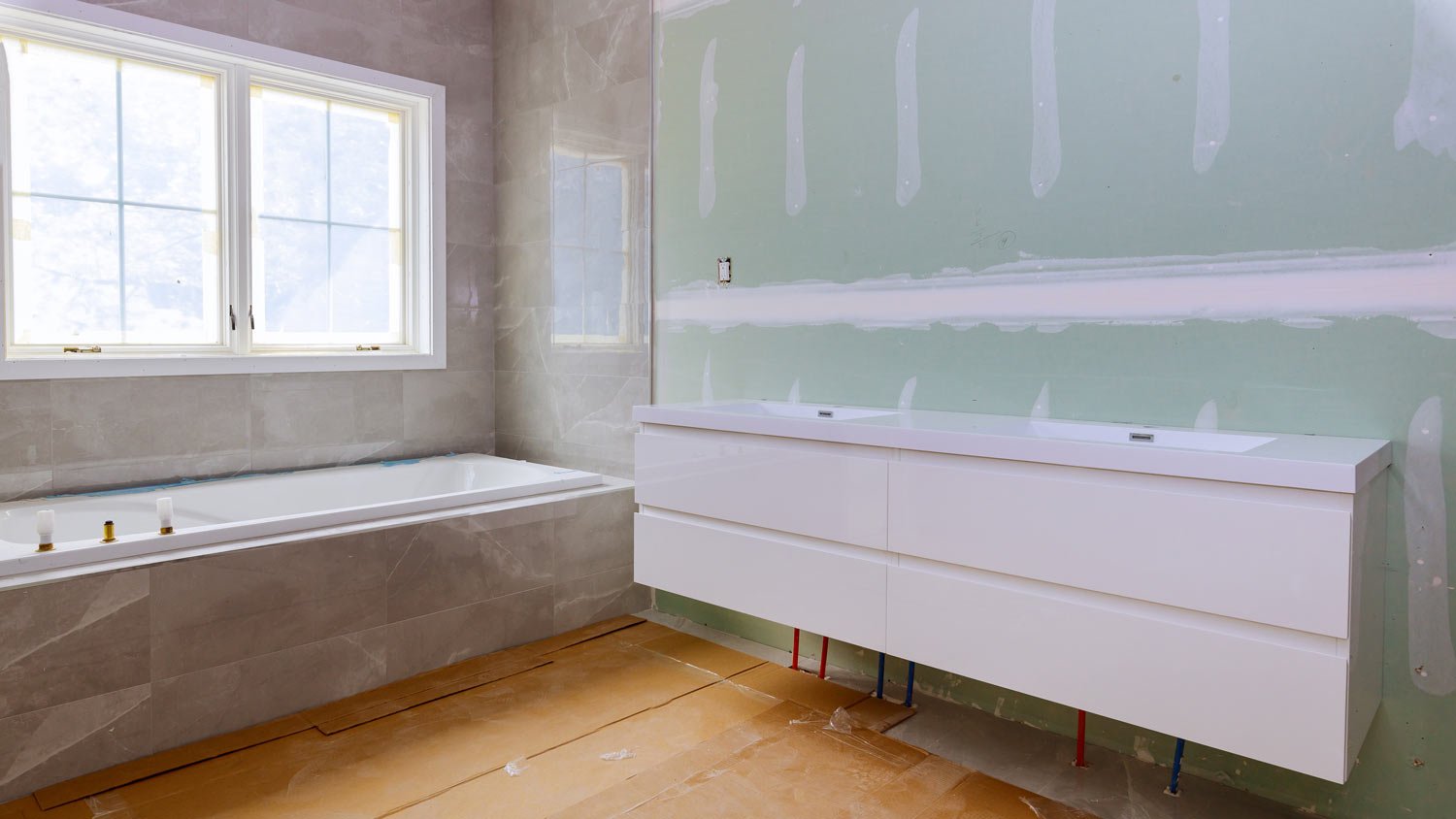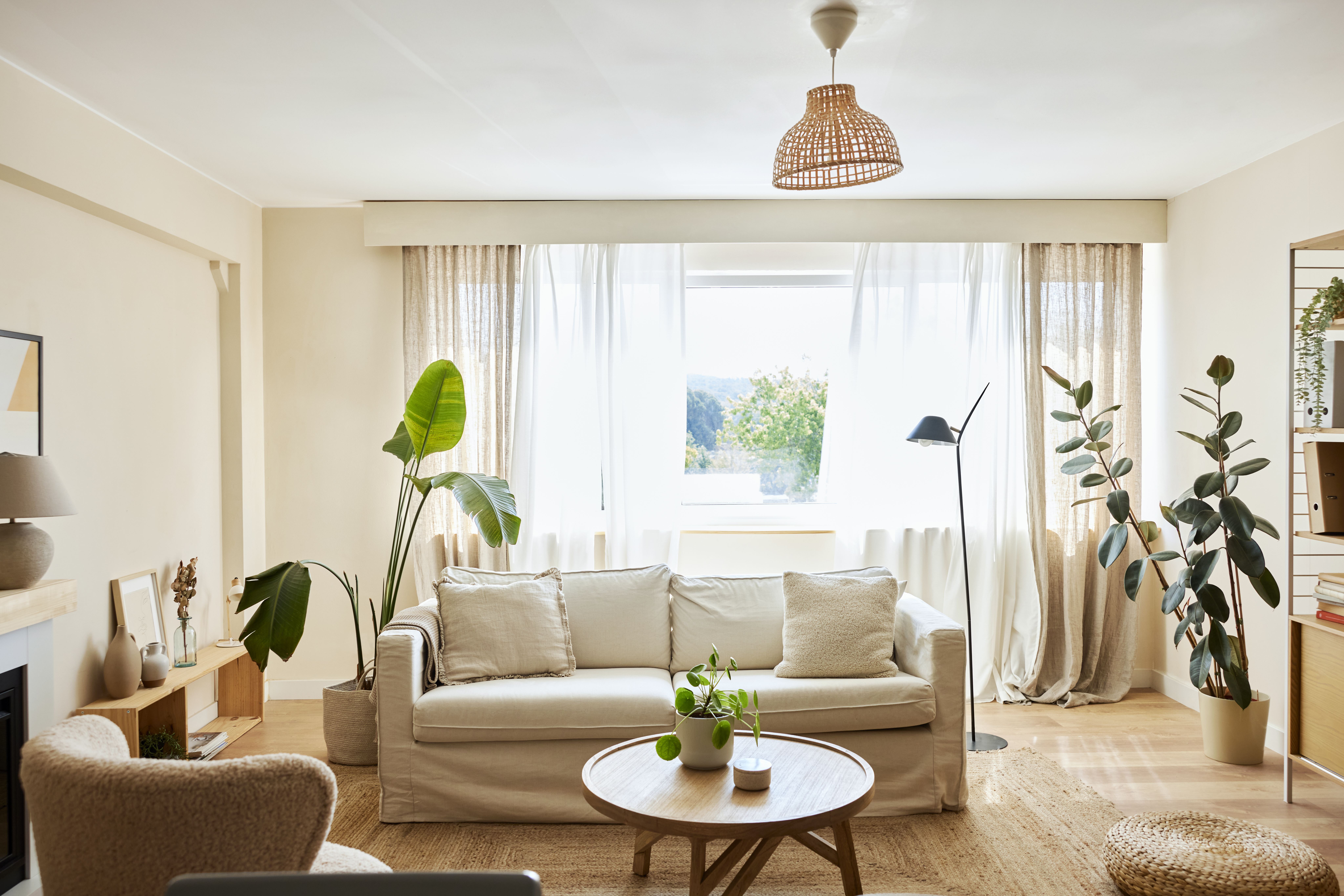Bathroom Drywall 101: What Drywall Should I Use in a Shower?
The wrong drywall turns a scrub-a-dub-dub into a scrub-a-dub-don’t


Regular drywall can mold or deteriorate in high humidity.
The best drywall for use in a shower is cement board.
Greenboard, purple drywall, and blueboard are all water-resistant but not waterproof.
You can add a waterproof membrane or waterproof primer for extra moisture protection.
Drywall is the most common construction material for walls in modern American homes, but standard drywall can't withstand the high-moisture conditions in bathrooms. Where there’s moisture, there’s the potential for mold and water damage. You’ll need a wall finish that holds up. This guide explores what drywall you should use in a shower as you build your dream home.
Why Can’t I Use Regular Drywall in My Bathroom?
Regular drywall—made from a mixture of gypsum sandwiched between paper or fiberglass—is the standard wall finish for bedrooms, living rooms, and just about anywhere else in your home besides the bathroom. In bathrooms, there’s too much moisture and humidity. Regular drywall, also known as whiteboard, can harbor mold and mildew or start to disintegrate with direct exposure to water.
What Drywall Should I Use in a Shower?

If you plan to use drywall alongside your shower installation, you’ll need to use one that tolerates high levels of moisture. While most drywall is not 100% waterproof, there are a few moisture- and mold-resistant options. This includes cement board, greenboard, paperless drywall, and purple or blueboard.
Most moisture-resistant drywall requires specialized installation techniques and materials, so always hire a shower installer near you.
Cement Board
Cement board is made from a mixture of cement, fillers, and cellulose fibers or fiberglass. It’s the go-to drywall for bathrooms, especially when used as a backing for tile (also called cement backing board). This type of board binds better to tiles and provides more support than regular drywall.
This is one of the only options suitable for areas with direct water exposure (like your shower surround) but comes with the highest drywall installation costs.
| Pros | Cons |
|---|---|
| Resists moisture and mold growth | Harder to install |
| Suitable for direct water exposure | Takes longer to install |
| Highly durable | Highest cost |
Greenboard
Greenboard is similar to regular drywall, but it’s covered in a waxy, water-resistant paper. The paper gives it its green color and makes it resistant to moisture. Though greenboard holds up better than regular drywall when exposed to moisture, it’s not waterproof or fully mold-resistant. Keep it away from areas with standing water (like a shower stall or bathtub surrounds), and use it in areas that only get the occasional splash.
| Pros | Cons |
|---|---|
| Resists moisture | Not ideal for direct water exposure |
| Cost-effective | Not as durable as other options |
| Easy to install | Mold can still grow on the uncoated side |
Paperless Drywall
Paperless drywall is similar to traditional drywall. Both contain a gypsum core, but paperless drywall uses fiberglass as the outer wrapping instead of paper. This makes it water-resistant and helps reduce (but not eliminate) the risk of mold growth.
Like greenboard, paperless drywall is not waterproof. Direct water exposure can still cause damage, so keep this type of drywall out of shower stalls and bathtub surrounds.
| Pros | Cons |
|---|---|
| Resists moisture and mold growth | Not ideal for direct water exposure |
| Highly durable | Specialized installation |
| Great for bathroom walls | Higher cost and limited availability |
Purple Drywall
Purple drywall, also known as mold-resistant drywall, is just what it looks like—a type of drywall with a purple coating that helps it resist mold growth. This drywall is one of the best choices for a bathroom because it’s water-resistant, mold-resistant, fire-resistant, and has sound-dampening properties.
Despite its superior mold-resistance, this type of drywall isn’t completely waterproof. It’s unsuitable for a shower stall with repeated direct water exposure, but you can put it everywhere in your bathroom.
| Pros | Cons |
|---|---|
| Inhibits mold growth | Not ideal for direct water exposure |
| Fire-resistant and water-resistant | Specialized installation |
| Sound-dampening | Higher cost and limited availability |
Blueboard
Blueboard, also known as plasterboard, is similar to greenboard and purple drywall. It still has a layer of gypsum in the center, but the coating is a type of blue paper formulated to resist moisture. This type of drywall performs well in areas with high humidity, limiting the risk of mold and mildew growth. It also has a smooth finish, making it easier to attain an even coat of paint.
| Pros | Cons |
|---|---|
| Water-resistant | Damaged by direct water exposure |
| Highly durable | Specialized installation |
| Easier to finish | Higher cost and limited availability |
Other Ways to Protect Your Bathroom Drywall
It’s not just about picking the right drywall for your bathroom. Direct or excessive water exposure can damage water-resistant drywalls. These tips can help protect your bathroom:
Install a backsplash: You should install a backsplash over areas that come into frequent direct contact with water, whether they’re prefabricated shower walls or ceramic tile.
Use a waterproof membrane: Installing a waterproof membrane can help waterproof water-resistant drywall so you can use it closer to your showerhead.
Use a waterproof primer: When you paint the drywall in your bathroom, it’s a good idea to use an oil or latex primer that helps further protect against mold and mildew.
Add ventilation: Ventilation, like a bathroom fan, will help reduce humidity inside your bathroom.
Shower installation requires expert knowledge of plumbing and building codes. Hire a shower installer to avoid potential mistakes that lead to water damage.





- Bathroom Remodeling
- Kitchen Remodeling
- Shower Installation
- Stair Installers
- Bathtub Installation
- Shower Door Installers
- Kitchen Design
- Bathroom Design Companies
- Storm Shelter Builders
- Pre-Made Cabinets
- Kitchen Refacing
- Bathtub Replacement
- Ceiling Tile Installation
- Suspended Ceiling Companies
- Residential Designers
- Stair Builders
- Remodel Designers
- Shower Enclosures
- Home Renovations
- Kitchen Renovations
- Garage Remodeling
- Grab Bar Installation
- Walk-In Tub Installers
- Tub to Shower Conversion
- Balcony Contractors


